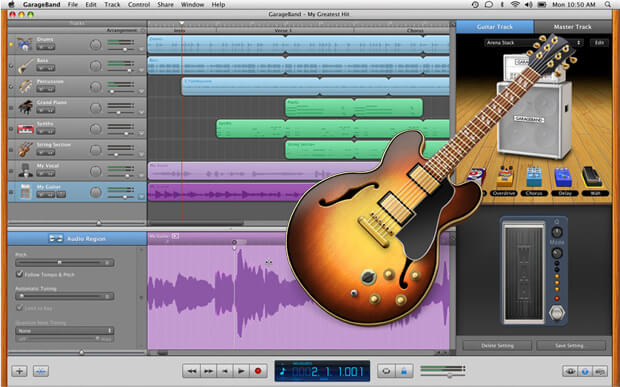This guide is available to download as a free PDF.. Feel free to copy and share this with your friends and family.
Even with its beginner-friendliness, it can be quite intimidating to jump into. GarageBand has a lot of features and tools, and while they’re very powerful, it’s not always immediately clear how to use them. So we’ll be going over the basics of GarageBand here.
Oct 22, 2011 Download it here: DirectlyDownload is new, a lot of softwares and movies are being upload. You won't be charged because it is. Apple Garageband Jam Pack: Remix Tools Jan 18, 2006. MPK Mini MKII White| 25-Key Ultra-Portable USB MIDI Drum Pad & Keyboard Controller with Joystick, VIP Software Download Included - Limited Edition. By Akai Professional. $79.00 $ 79 00 $99.00 Prime. Software for Mac and PC and sustain pedal 1/4 inch jack socket,7.
This guide will help you scratch the surface of the software, and help you get on your way to becoming a GarageBand expert. Getting GarageBand on All of Your Devices Before we get started, you’ll need to make sure you have GarageBand on your devices.
It’s available for Mac, iPhone, and iPad, and if you have one of those devices, you probably already have the app. If you don’t, just head to App Store and download it. When you fire it up for the first time, it might ask you to download additional sound files. It’s a good idea to grab these, as they’ll give you more options for creating your own music.
You’ll also notice that many of the instruments won’t be downloaded initially. If you see an instrument or loop that has a greyed-out title and has a downward-facing arrow next to it, just click the arrow to download the necessary files.
Starting a New Project and the Main Window When you start up GarageBand, you’ll be asked to create a new project (you can also get to this point with File > New or Cmd + N). In this tutorial, we’ll be using the Empty Project option. I encourage you to check out the other options, though, as they’re great for learning how to work with GarageBand’s tools. On the left, you’ll see the library, which lets you choose different instruments. The top-right panel is the workspace, where you’ll see the notes you’ve recorded and the different instrument tracks in your project.

The bottom-right panel is the editor, where you can make tweaks to your tracks. And floating above them all is the musical typing keyboard, where you can play notes directly from your Mac’s keyboard (we’ll go over this in a moment).
There are many other windows and panels that you’ll see throughout your GarageBand adventure, but these are the main ones you’ll be using. Getting Set Up Before we start writing a new song, there are a few settings you might want to tweak. We’ll start with tempo, which is displayed in the Beats & Project window at the top of the screen. The default tempo is 120 beats per minute, but you can change this by double-clicking the tempo value and entering a new one.

 0 kommentar(er)
0 kommentar(er)
